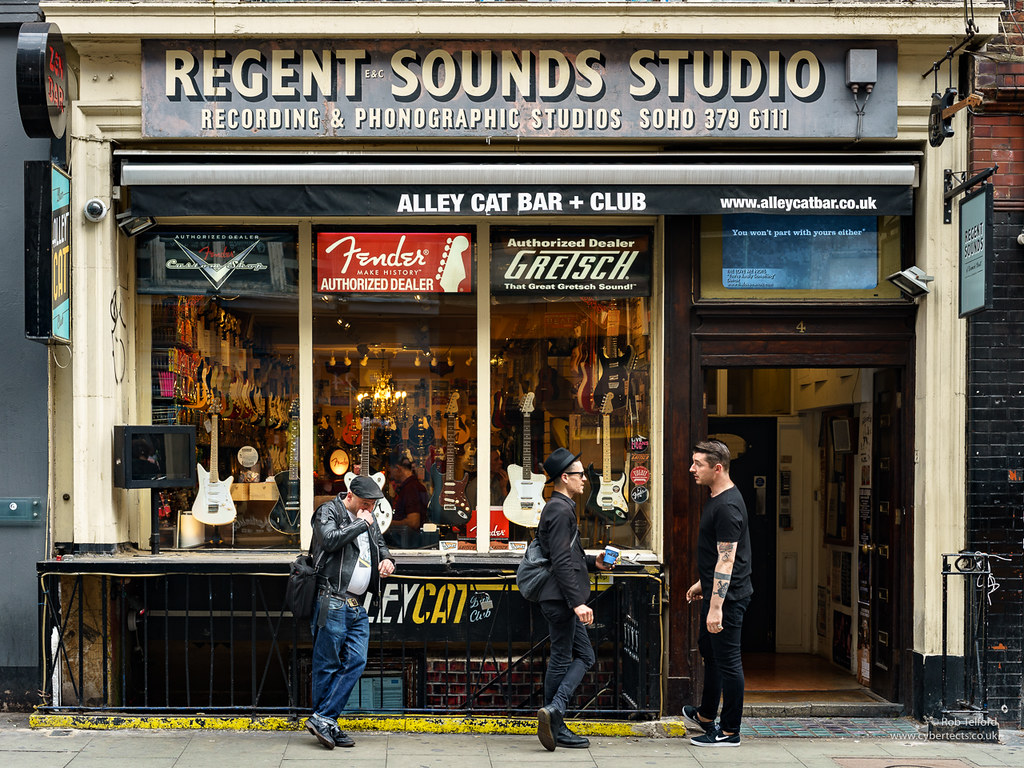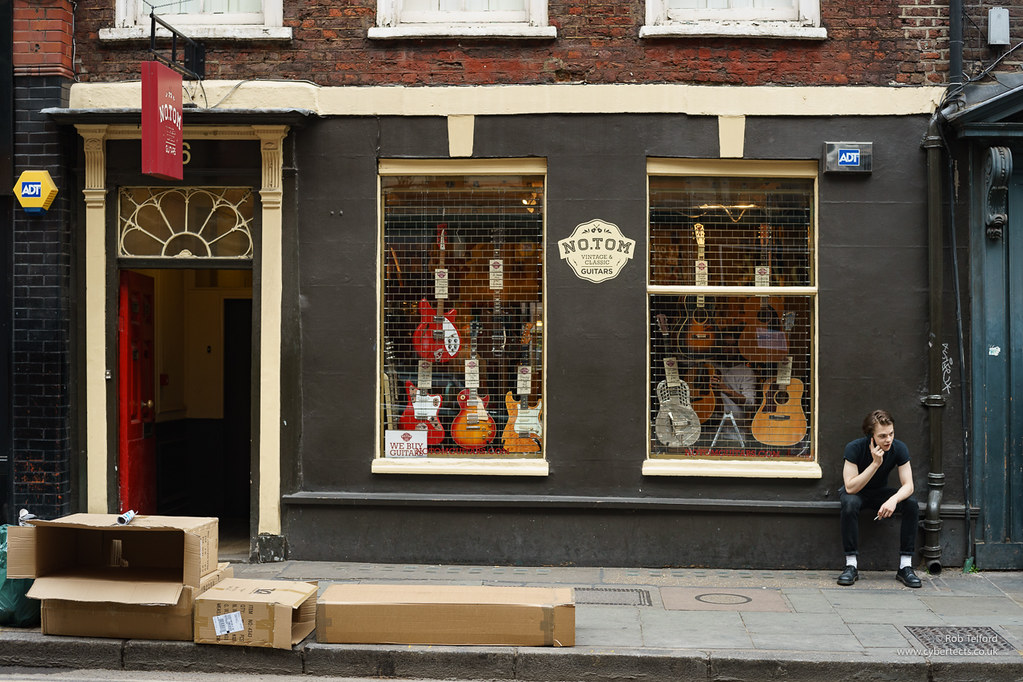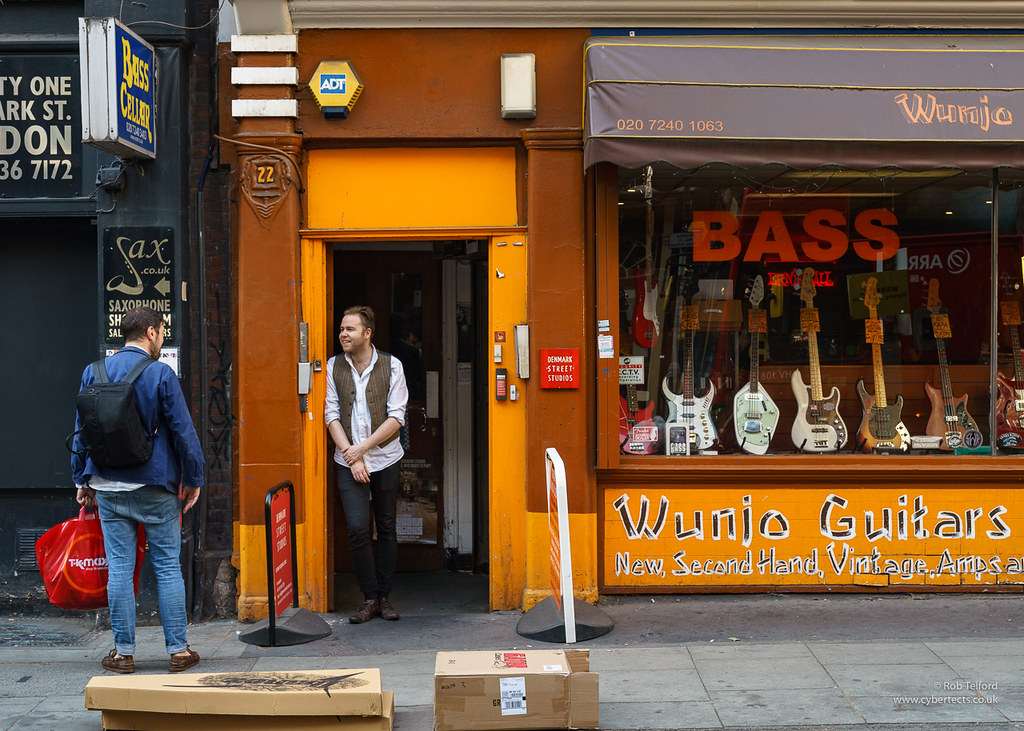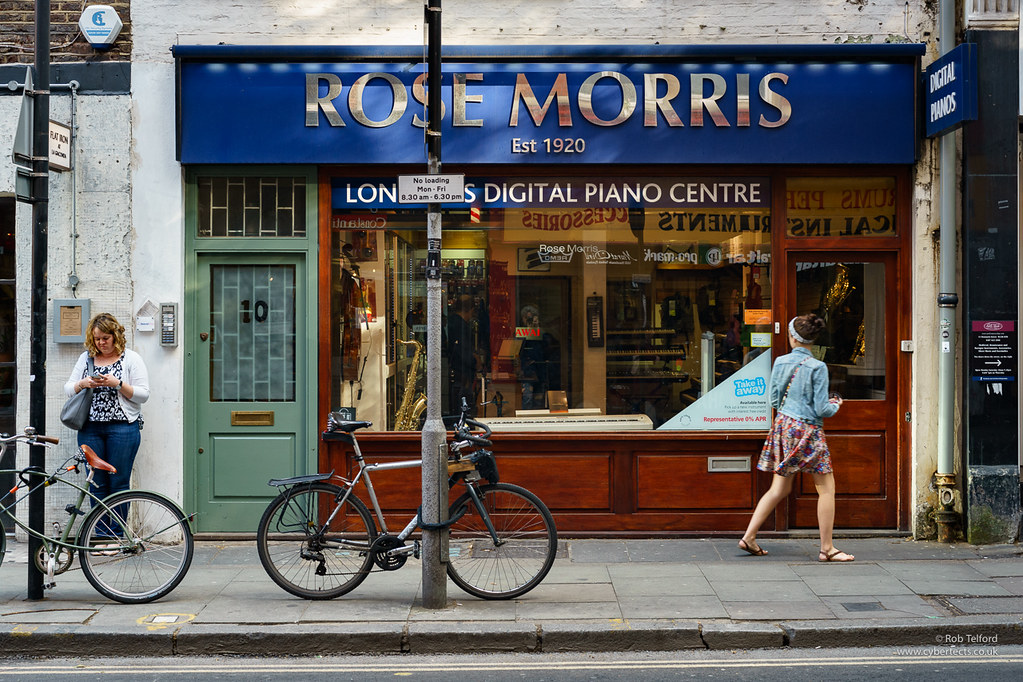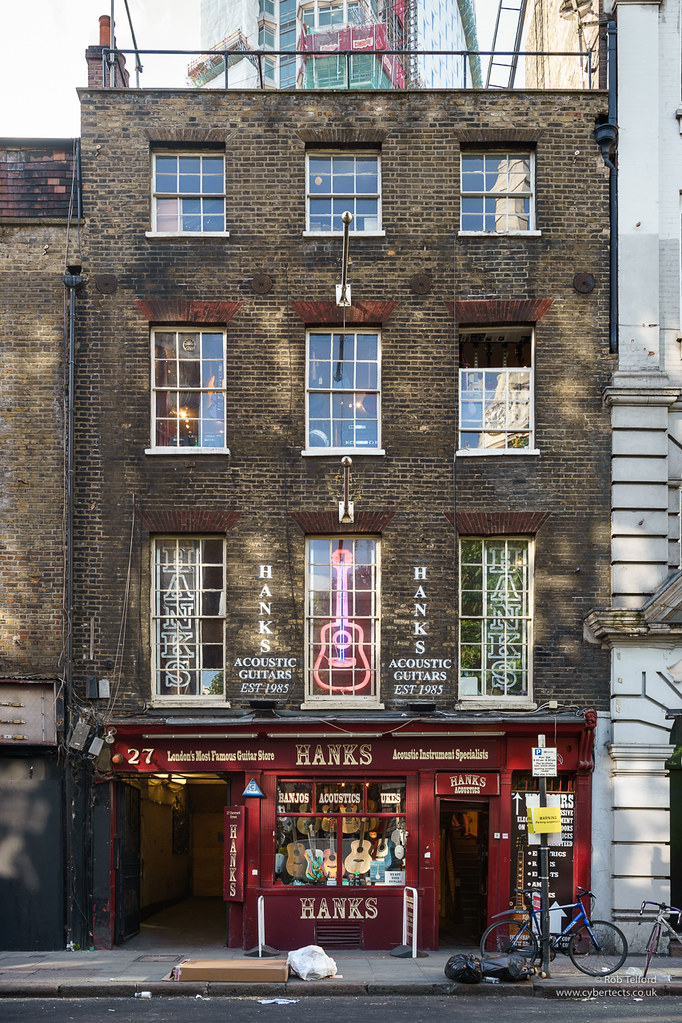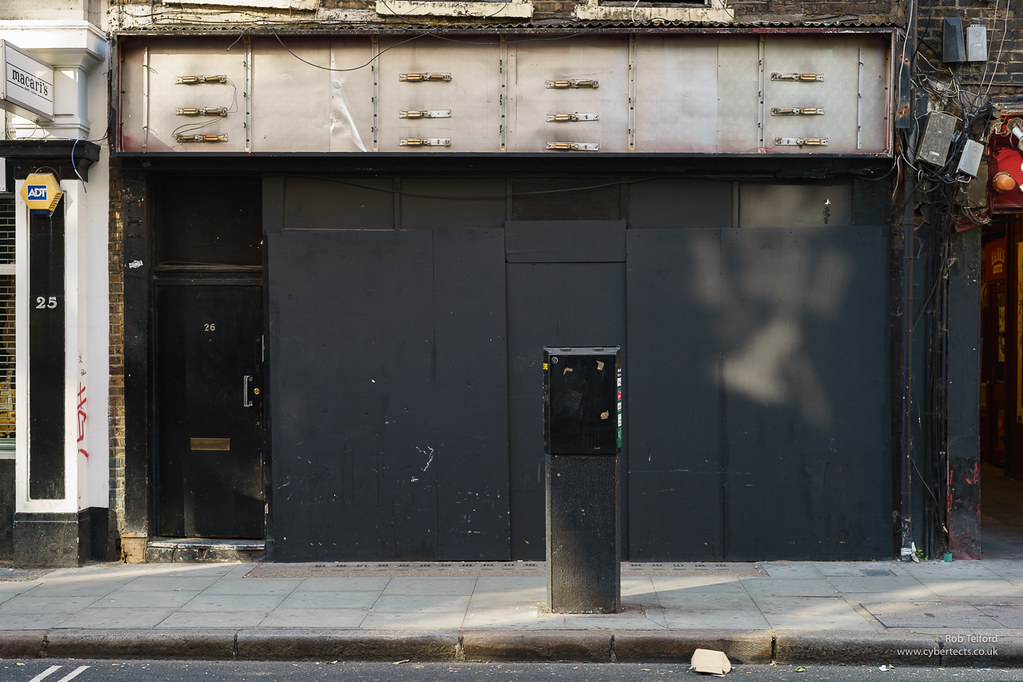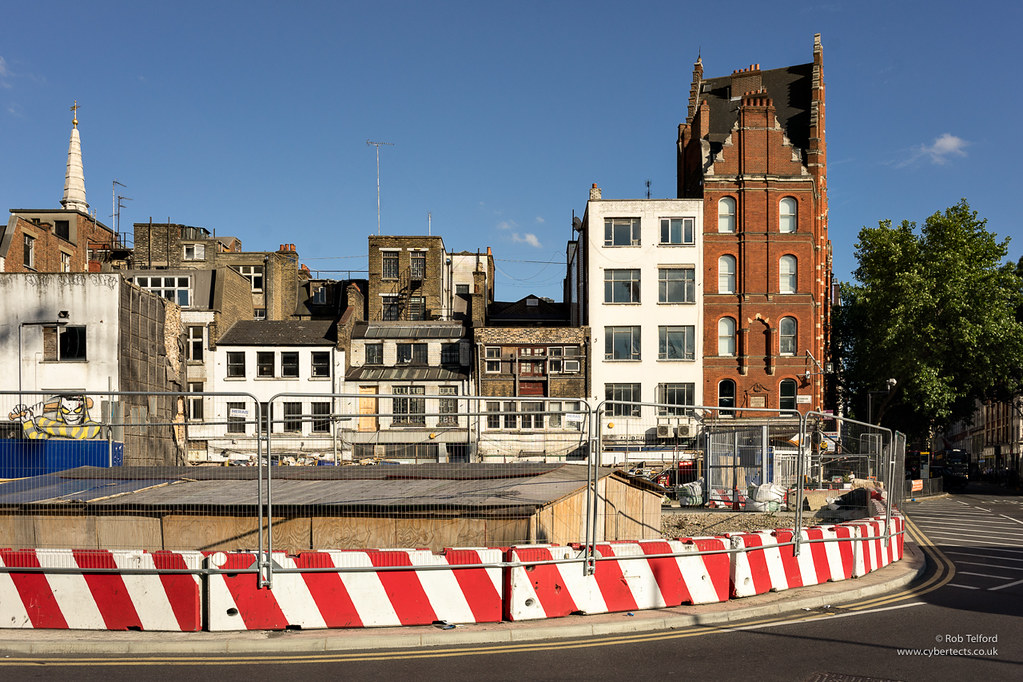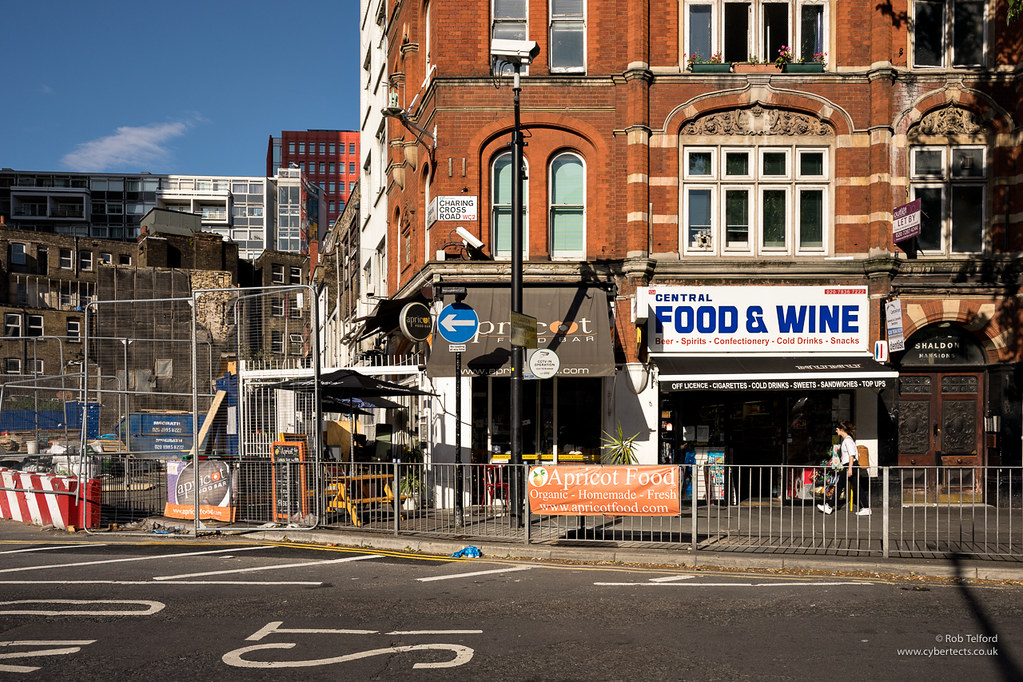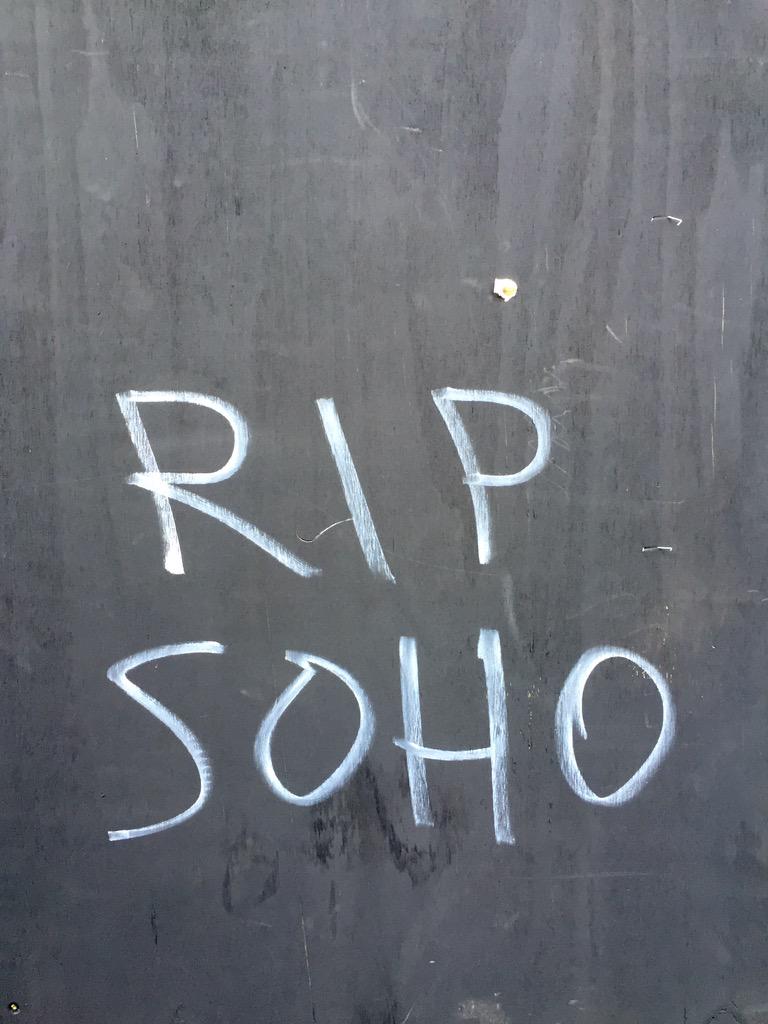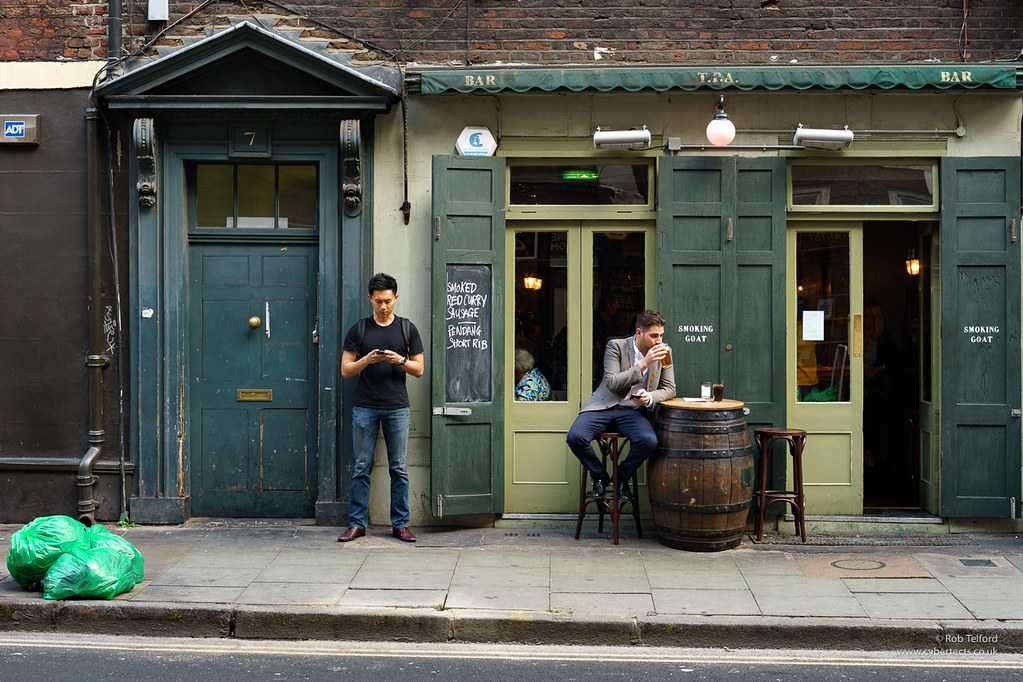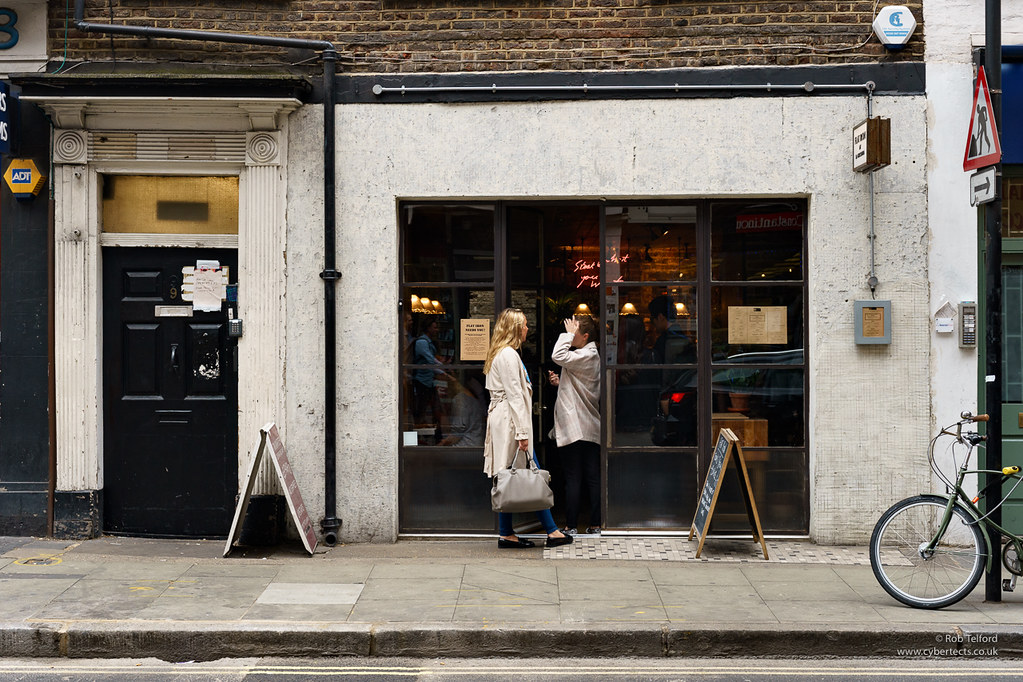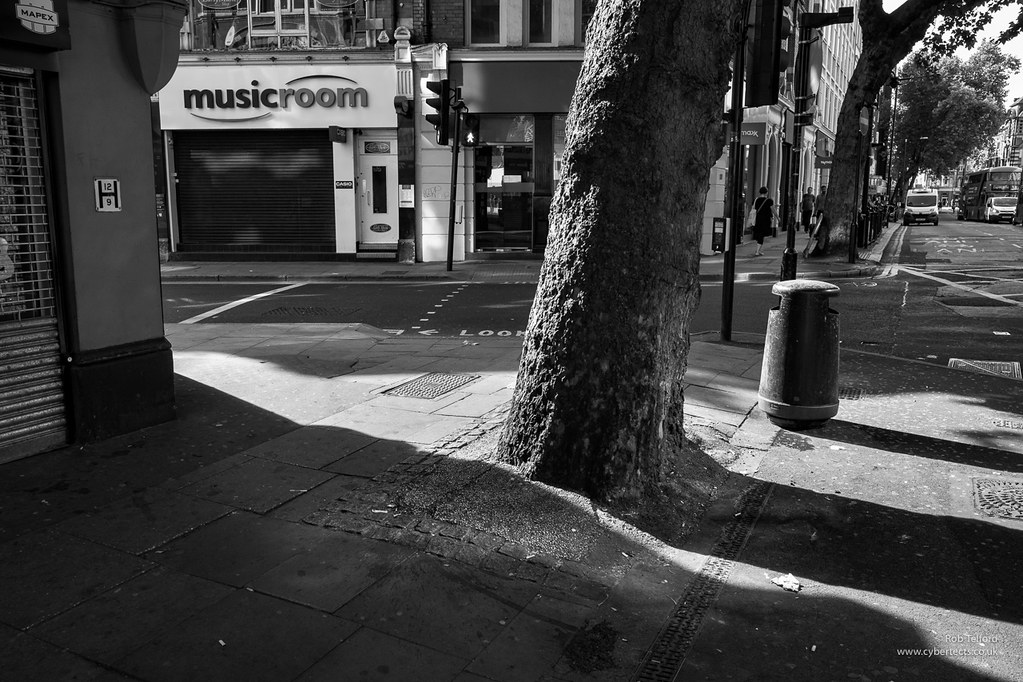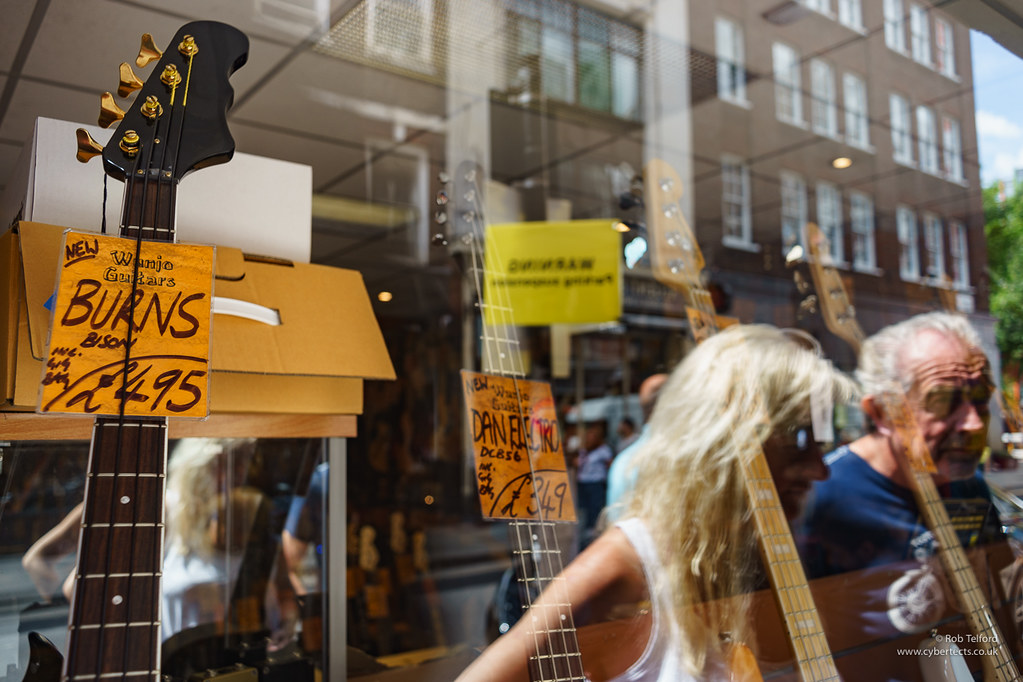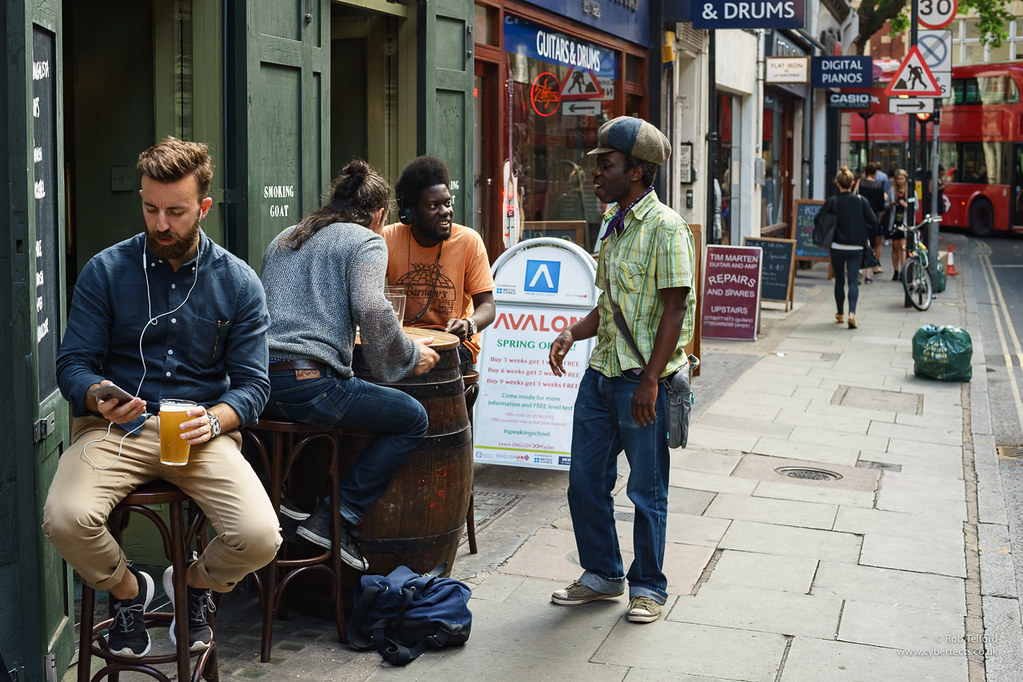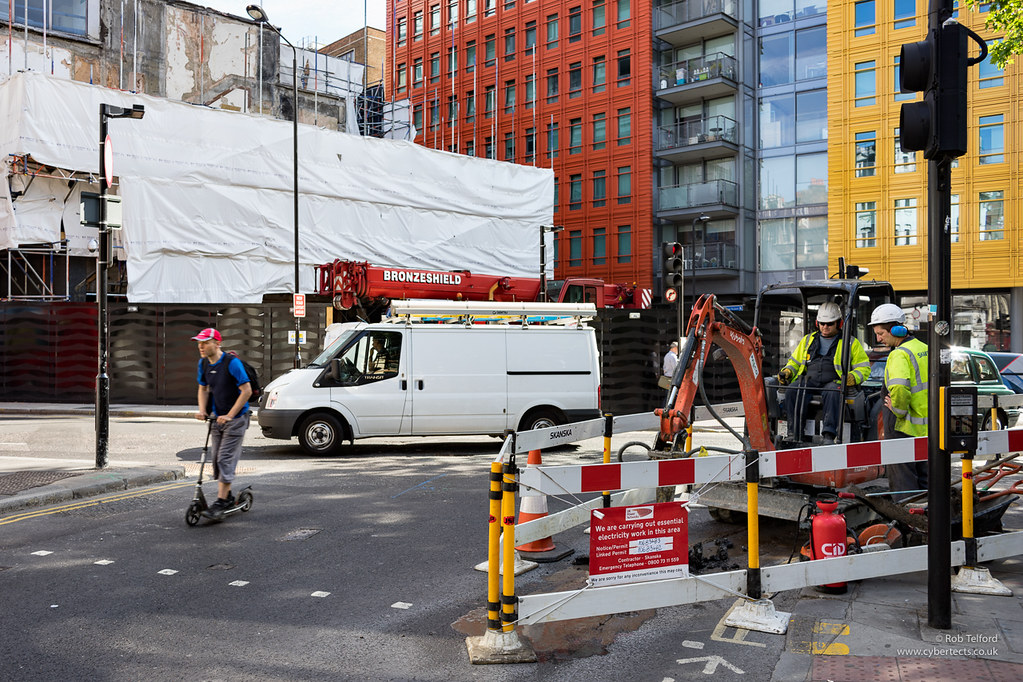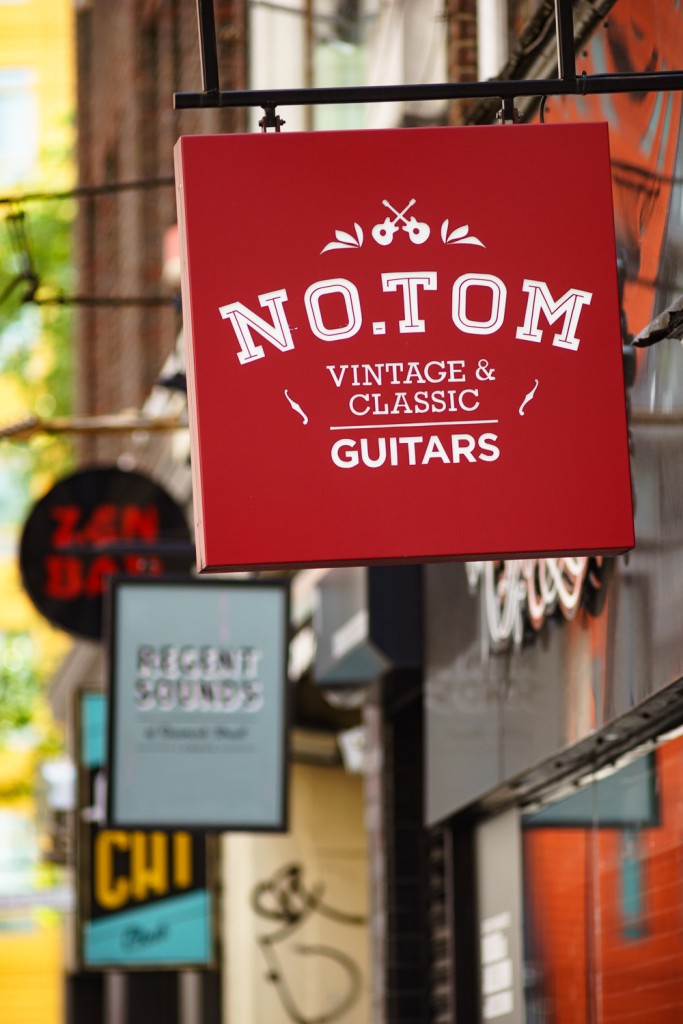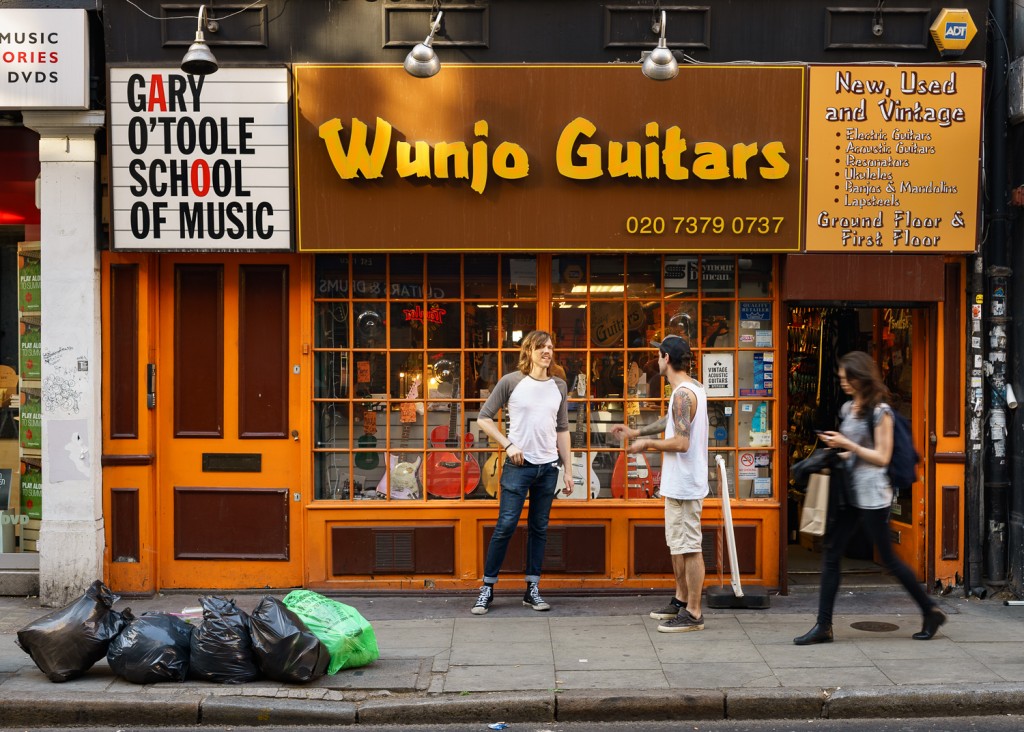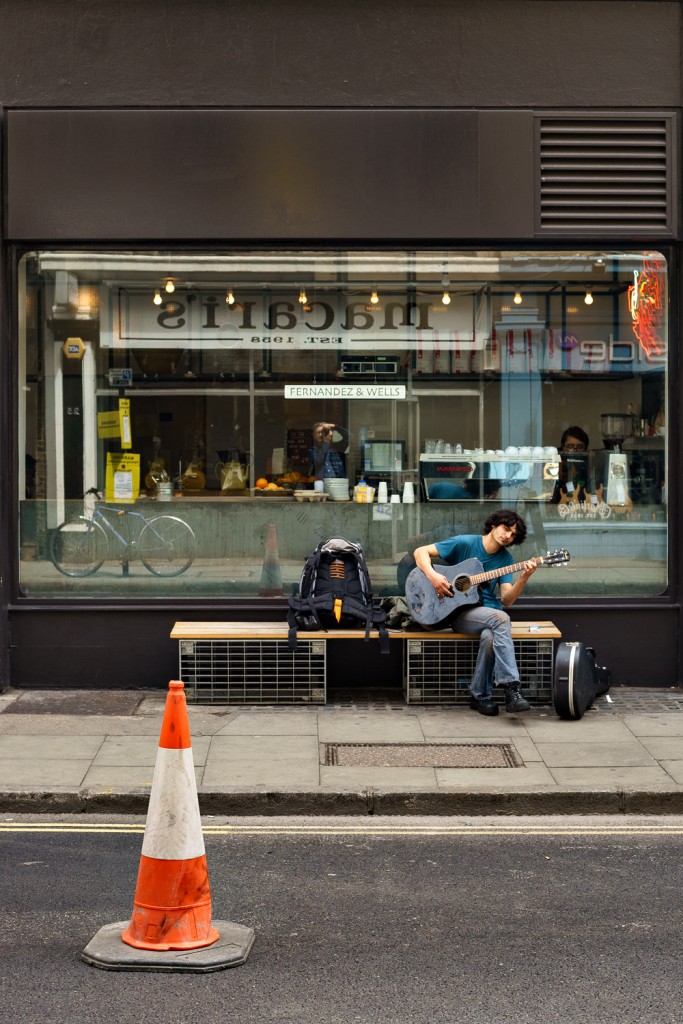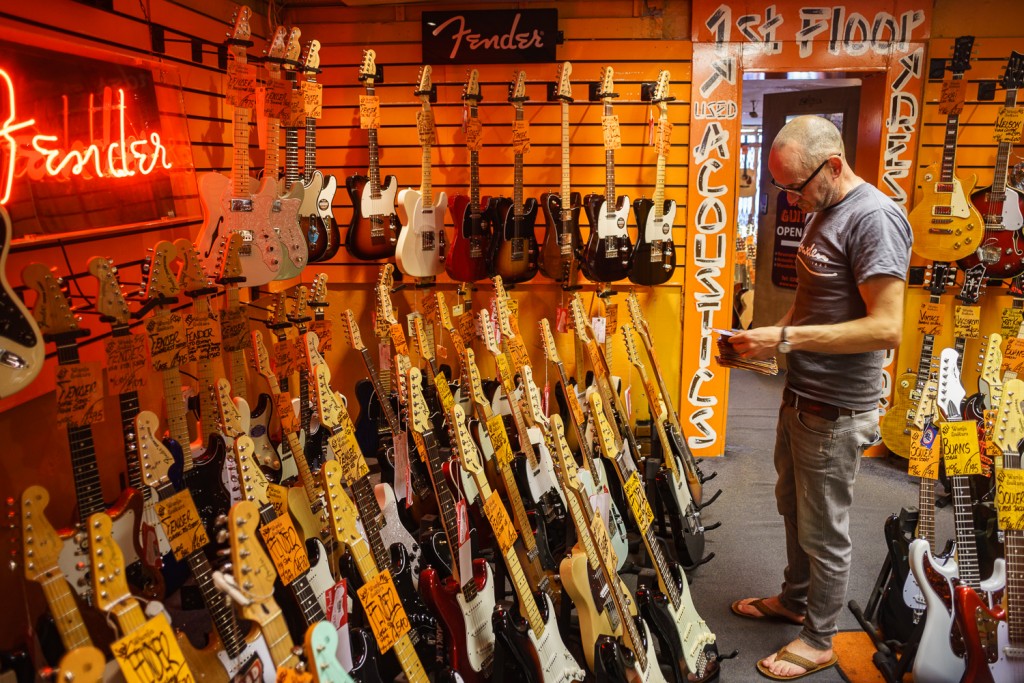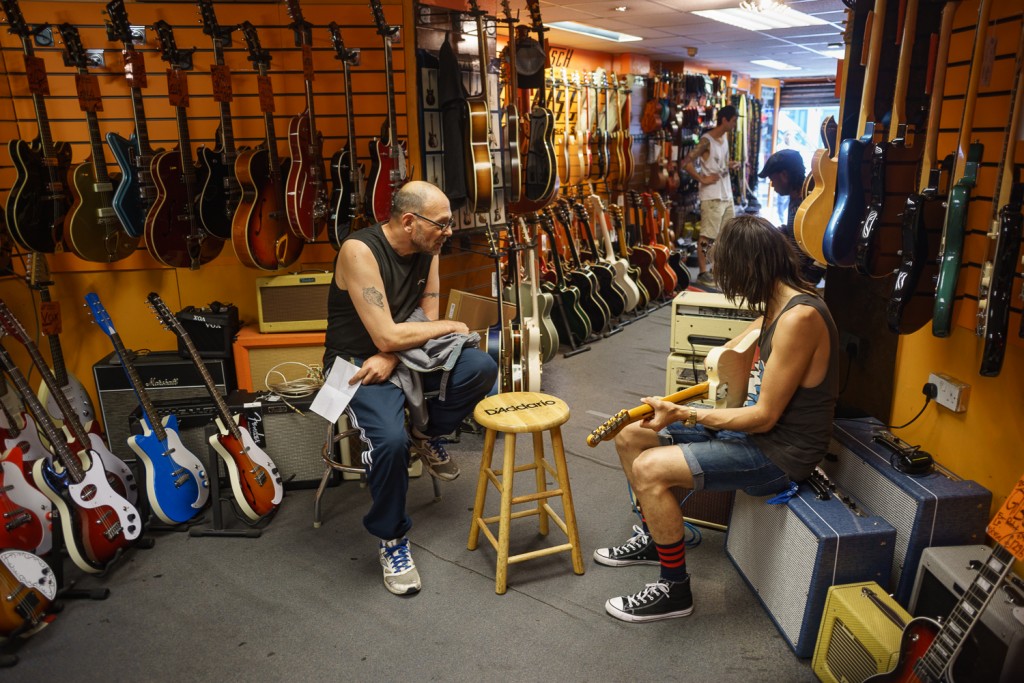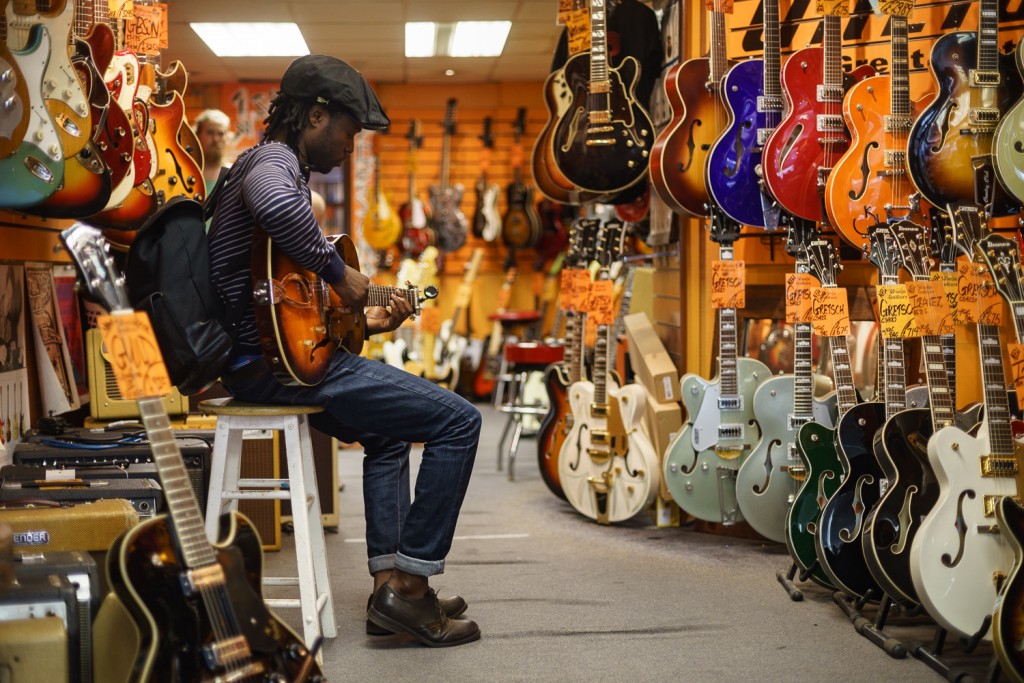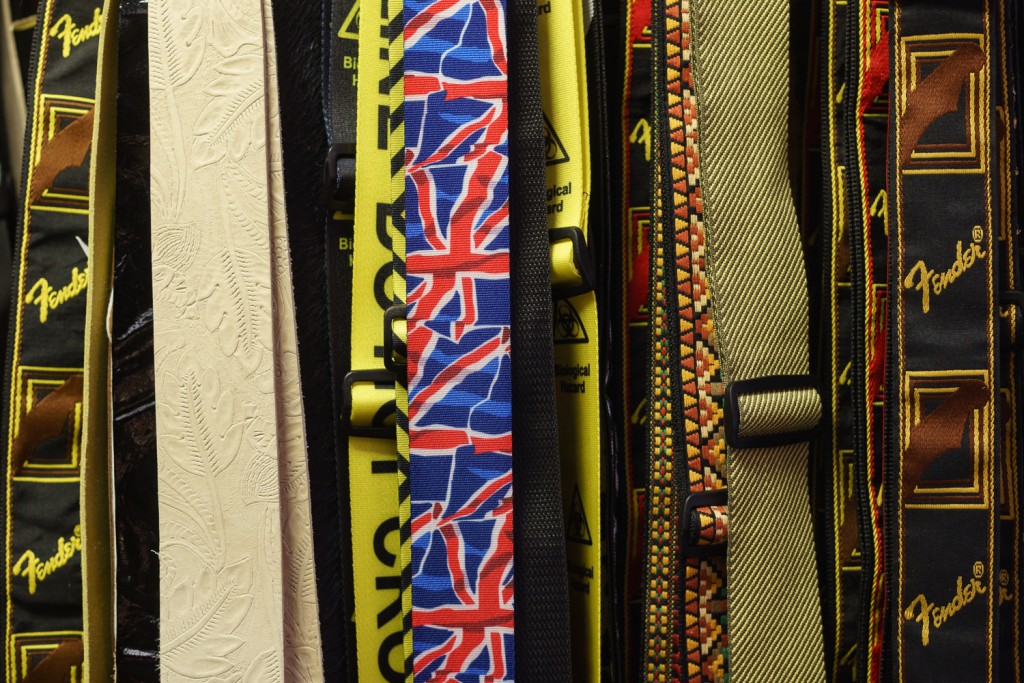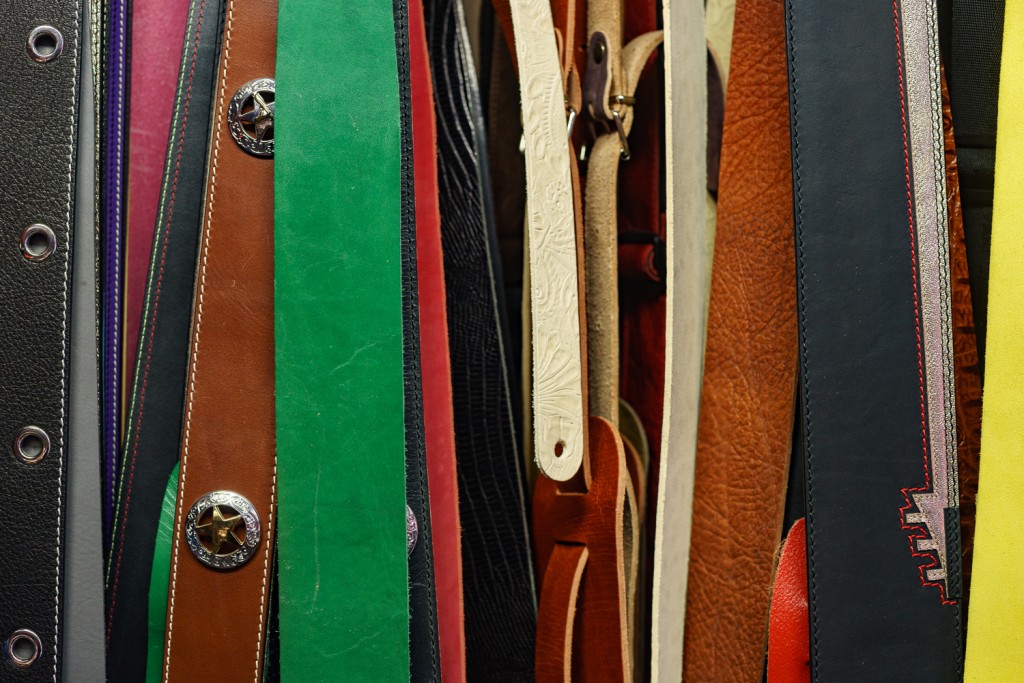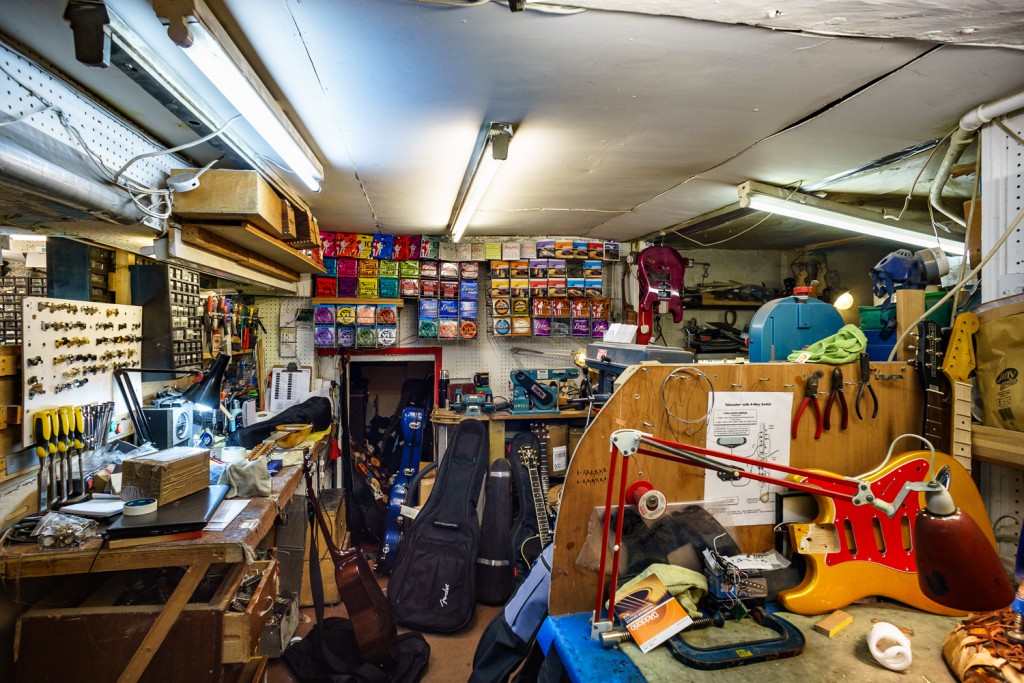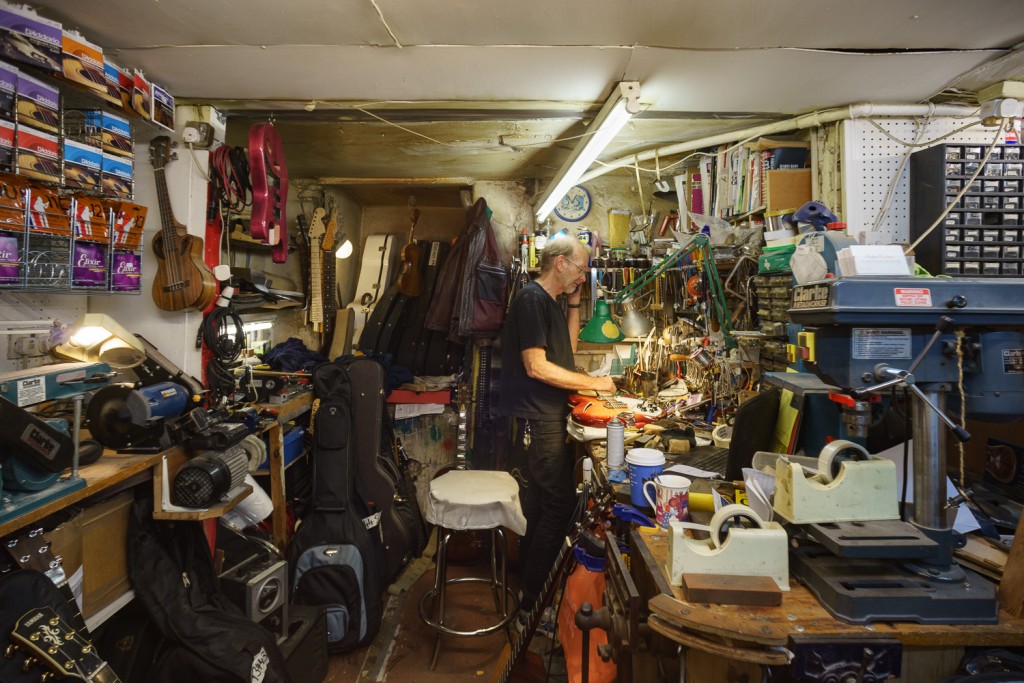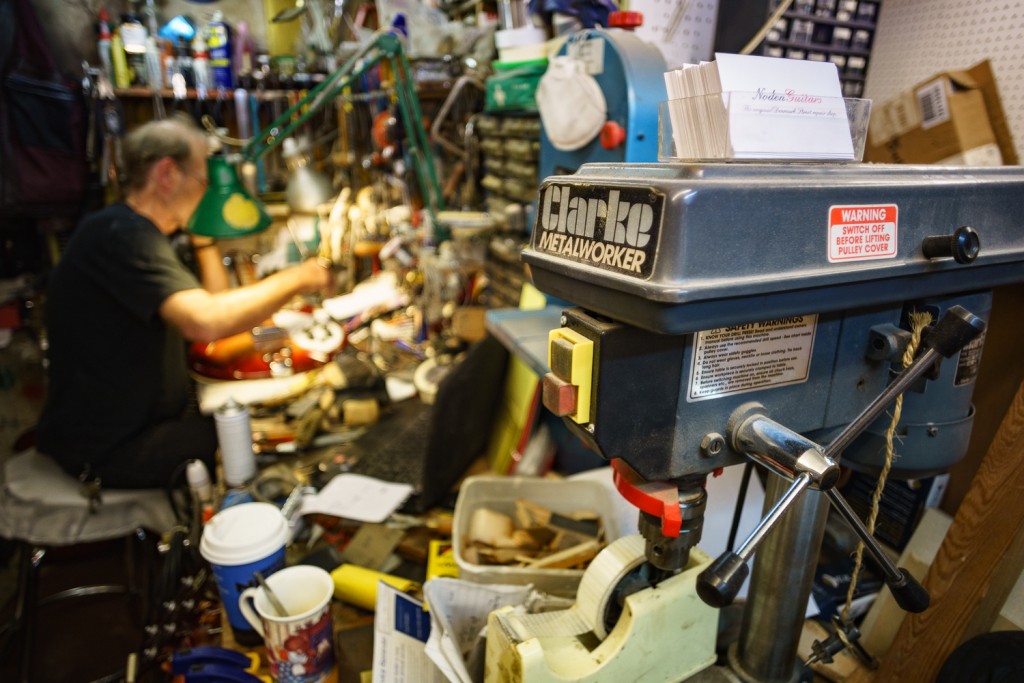- Messages
- 9,006
- Name
- Rob Telford
- Edit My Images
- No
I think I have fallen into this project almost by accident, so this first post is as much an assembling of my thoughts as an introduction, so apologies for the long read...
Also, emphatically, this is NOT a 365 or 52 project!
You may already be familiar with Denmark Street, known as London's Tin Pan Alley. For decades it has been something of a Mecca for musicians, with a large number of shops selling instruments, accessories, sheet music and repairs; with recording studios and gig venues thrown in.
I have been frequenting Denmark Street for over thirty years since I was a teenager, window shopping for guitars that I could not afford.
In better times since then I have bought guitars, basses and keyboards in Denmark Street. When money was tighter, I have gone there with a heavy heart to sell them.
Converted from a former blacksmith's in 1994, the 12 Bar Club at No. 26 provided me with a venue to perform at and to go see other people play on its intimate stage, where you could reach out and touch the feet of the audience up in the gallery.
Get a bunch of musicians together and they will all have different views and stories about Denmark Street. Some of the shops have, in the past at least, offered legendarily poor service and high prices. I think it's fair to say that the worst offenders are no longer trading. Other, new shops like Wunjos have taken their place and treat their customers with more respect.
There is a shadow over Denmark Street.
To its north, the St Giles Circus development is getting under way. It has already closed much of Denmark Place, the alley that runs round the back of Denmark Street, and threatens to rob some of the shops on the northern side of the street of the rear of their premises. St Giles Circus is likely to be completed around the same time as the new Crossrail station at Tottenham Court Road opens in 2018.
A huge shock occurred when 12 Bar closed and moved to Holloway Road in Islington at the beginning of 2015. As anticipated for several years, their lease had been terminated by the developers, Consolidated Developments. The club was the subject of a two week squat by protestors before they were turfed out by bailiffs.
There has been a lot of media coverage of the campaign to 'save Denmark Street', much of it suggesting it is in its death throes or dead already; that at best it will become a Disneyfied version of Tin Pan Alley for tourists, at worst taken over by McDonalds and Starbucks.
Counter to this, if you talk to those in whose name it is being run, those who work in and manage the shops, they find the campaign far too negative; that it's actually affecting their businesses adversely, putting people off shopping there. They're clearly tired of the questions you overhear people asking: when are they closing? when are the bulldozers moving in?
While they don't welcome the uncertainty that hangs over the street, many of them are fairly positive about the future. Clearly, whatever happens, the area will be faced by a period of change over the next few years.
My day job moved offices recently and I've been working nearby for a few months, so I'd begun casually to take a series of 'portraits' of the shops' exteriors last week when it occurred to me that this might develop into something a little more structured, taking in the interiors of the shops, the staff and their stories, to try to get a more rounded feel for life on Denmark Street that goes beyond campaign soundbites.
A quick sample of three of the shops that I know (and who know me) best confirmed that they're up for the idea. Photographers and especially TV crews regularly want access to film, but they come in, get their footage and disappear to meet their deadlines far too quickly.
Unresolved questions:
1. A proper mission statement
2. Presentation format - how the hell am I going to present what I'm doing?
Options:
3. Lenses
I'd started out with a triplet of Contax/Yashica Zeiss primes on my A7 - a 28mm f/2.8 Distagon, a 50mm f/1.7 Planar and an 85mm f/2.8 Sonnar, which are wonderful.
It would be nice to aim do the whole shoot with just those, but I may have to resort to my faster Canon FDs if I'm shooting in lower light inside or crank up the ISO. Flash isn't often my thing.
Wait and see...
4. How much text?
To be determined. I think this may be something where the words are as important as the pictures.
5. Record interviews?
It would probably be good to get some verbatim quotes from the people I talk to. My iPhone will probably suffice as a recording medium.
6. Time Scale
This is going to have to be done as a 'half hour at lunch' and 'half hour before going home' exercise, but that's OK. The construction work hasn't started yet and isn't likely to be completed for three years or so, so I can afford a slow burn. The last personal photo project I got myself involved in was documenting the rise of The Shard skyscraper at London Bridge and involved my taking about 6000 pictures over three years.
Any thoughts on any of the above will gratefully received.
The next post will have some photos, I promise...
Also, emphatically, this is NOT a 365 or 52 project!
You may already be familiar with Denmark Street, known as London's Tin Pan Alley. For decades it has been something of a Mecca for musicians, with a large number of shops selling instruments, accessories, sheet music and repairs; with recording studios and gig venues thrown in.
I have been frequenting Denmark Street for over thirty years since I was a teenager, window shopping for guitars that I could not afford.
In better times since then I have bought guitars, basses and keyboards in Denmark Street. When money was tighter, I have gone there with a heavy heart to sell them.
Converted from a former blacksmith's in 1994, the 12 Bar Club at No. 26 provided me with a venue to perform at and to go see other people play on its intimate stage, where you could reach out and touch the feet of the audience up in the gallery.
Get a bunch of musicians together and they will all have different views and stories about Denmark Street. Some of the shops have, in the past at least, offered legendarily poor service and high prices. I think it's fair to say that the worst offenders are no longer trading. Other, new shops like Wunjos have taken their place and treat their customers with more respect.
There is a shadow over Denmark Street.
To its north, the St Giles Circus development is getting under way. It has already closed much of Denmark Place, the alley that runs round the back of Denmark Street, and threatens to rob some of the shops on the northern side of the street of the rear of their premises. St Giles Circus is likely to be completed around the same time as the new Crossrail station at Tottenham Court Road opens in 2018.
A huge shock occurred when 12 Bar closed and moved to Holloway Road in Islington at the beginning of 2015. As anticipated for several years, their lease had been terminated by the developers, Consolidated Developments. The club was the subject of a two week squat by protestors before they were turfed out by bailiffs.
There has been a lot of media coverage of the campaign to 'save Denmark Street', much of it suggesting it is in its death throes or dead already; that at best it will become a Disneyfied version of Tin Pan Alley for tourists, at worst taken over by McDonalds and Starbucks.
Counter to this, if you talk to those in whose name it is being run, those who work in and manage the shops, they find the campaign far too negative; that it's actually affecting their businesses adversely, putting people off shopping there. They're clearly tired of the questions you overhear people asking: when are they closing? when are the bulldozers moving in?
While they don't welcome the uncertainty that hangs over the street, many of them are fairly positive about the future. Clearly, whatever happens, the area will be faced by a period of change over the next few years.
My day job moved offices recently and I've been working nearby for a few months, so I'd begun casually to take a series of 'portraits' of the shops' exteriors last week when it occurred to me that this might develop into something a little more structured, taking in the interiors of the shops, the staff and their stories, to try to get a more rounded feel for life on Denmark Street that goes beyond campaign soundbites.
A quick sample of three of the shops that I know (and who know me) best confirmed that they're up for the idea. Photographers and especially TV crews regularly want access to film, but they come in, get their footage and disappear to meet their deadlines far too quickly.
Unresolved questions:
1. A proper mission statement
2. Presentation format - how the hell am I going to present what I'm doing?
Options:
- a web site?
- a book?
- poster sized prints fly-posted overnight on the boarded up windows of the 12 Bar Club

3. Lenses
I'd started out with a triplet of Contax/Yashica Zeiss primes on my A7 - a 28mm f/2.8 Distagon, a 50mm f/1.7 Planar and an 85mm f/2.8 Sonnar, which are wonderful.
It would be nice to aim do the whole shoot with just those, but I may have to resort to my faster Canon FDs if I'm shooting in lower light inside or crank up the ISO. Flash isn't often my thing.
Wait and see...
4. How much text?
To be determined. I think this may be something where the words are as important as the pictures.
5. Record interviews?
It would probably be good to get some verbatim quotes from the people I talk to. My iPhone will probably suffice as a recording medium.
6. Time Scale
This is going to have to be done as a 'half hour at lunch' and 'half hour before going home' exercise, but that's OK. The construction work hasn't started yet and isn't likely to be completed for three years or so, so I can afford a slow burn. The last personal photo project I got myself involved in was documenting the rise of The Shard skyscraper at London Bridge and involved my taking about 6000 pictures over three years.
Any thoughts on any of the above will gratefully received.
The next post will have some photos, I promise...
Last edited:


